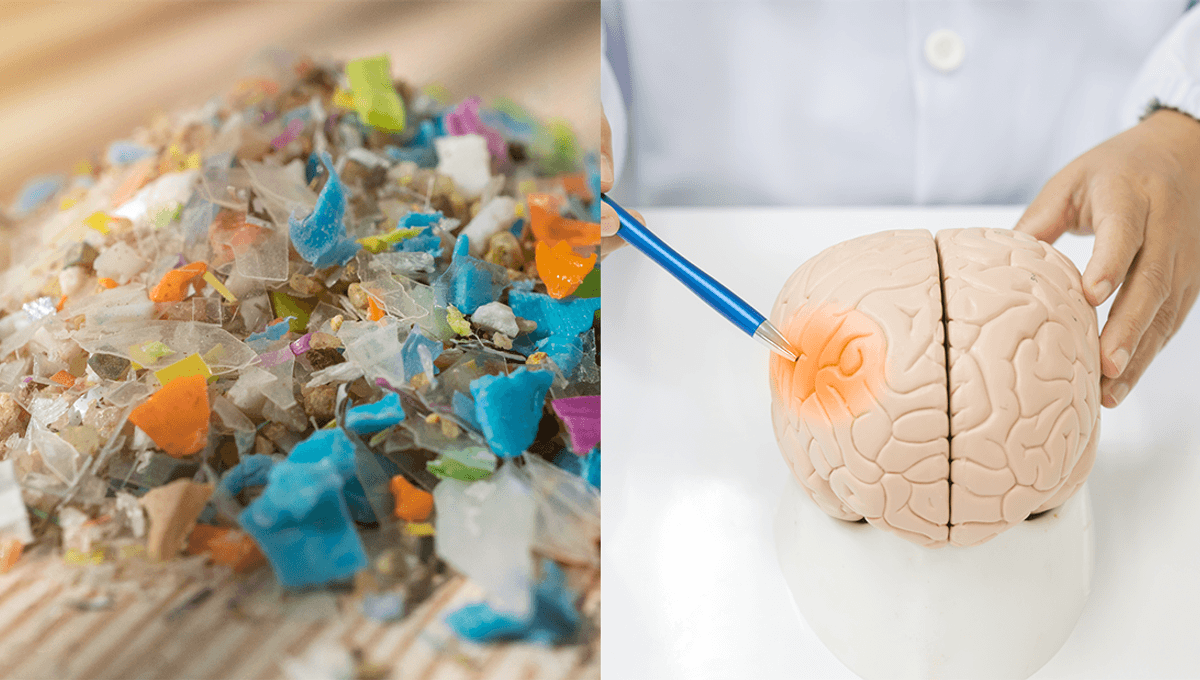
Microplastics are everywhere, causing havoc in the environment. They’re in the oceans, in our food – even inside us. From lungs, to placentas, to penises, no part of the human body is seemingly safe from microplastic contamination, and that includes the brain. A new preprint, which is yet to undergo peer review, has sparked fears about the amount of microplastics finding their way inside the human brain, and what that could mean for our health.
The study looked at 51 samples of brain tissue from people who died in 2016 or 2024, collected during routine post-mortem examinations. There was a roughly even split between male and female samples, and the mean age at death was 50 years for the 2016 cohort and 52.3 years for the 2024 cohort.
Previous studies have shown how microplastics and nanoplastics entering the body via the gut can quickly migrate to other tissues and can cross the blood-brain barrier in as little as two hours. As more and more plastic products have infiltrated our everyday lives, humans have been chronically exposed to these infinitesimal particles. And they really are tiny – from 500 micrometers to just 1 nanometer in diameter. Despite the imagery we often use to illustrate them, microplastics are actually invisible to the naked eye.
Because of their size, trying to find these particles in tissue samples is tricky. The research team, from the University of New Mexico, chemically analyzed small portions of the brain samples to look for signatures of 12 different plastic polymers, including PVC, polystyrene, and polyethylene.
They also used powerful transmission electron microscopy – while this could not allow them to identify exactly what plastics they might be looking at, they did observe “innumerable” suspect particles that appeared to be possible microplastics from their size and shape.
They compared their findings to samples of liver and kidney tissues, also collected during the autopsies.
“The brain samples, all derived from the frontal cortex, revealed substantially higher concentrations than liver or kidney,” the authors write in their preprint. Some of the 2024 samples contained nearly 0.5 percent microplastics by weight.
“It’s pretty alarming,” first author Dr Matthew Campen told The New Lede. “There’s much more plastic in our brains than I ever would have imagined or been comfortable with.”
Previous research in animal models has suggested that the accumulation of microplastics in the brain could possibly lead to behavioral changes and inflammation, so it’s natural to be concerned about the potential health implications.
“We don’t yet know the effects of microplastics in the human brain,” wrote Dr Sarah Hellewell, Dr Anastazja Gorecki, and PhD candidate Charlotte Sofield – who were not part of the study team – for The Conversation. They point out that while some experiments have hinted at the potential harms of microplastic contamination within the body, we don’t have any definitive answers yet.
But as the study’s data shows, these questions are becoming increasingly timely. The samples from 2024 showed considerably higher levels of polymers than those from 2016.
“You can draw a line – it’s increasing over time. It’s consistent with what you’re seeing in the environment,” Campen told The New Lede.
As this is a preprint, it has not yet been verified by other scientists in peer review. The authors also point to some limitations of the work, such as their analytical methods, which “have yet to be widely adopted and refined.”
They did, however, take steps to account for any extra plastic exposure during the course of their experiments – few things hammer home just how surrounded we are by plastic than considering all of the dishes, flasks, and pipette tips that are used and discarded in a typical lab every day.
There are still lots of questions to be answered about how microplastics might be affecting our brain health. For now, Hellewell, Gorecki, and Sofield have one recommendation: “the best thing we can do is reduce our exposure to plastics where we can and produce less plastic waste, so less ends up in the environment.”
The preprint is available via the National Library of Medicine.
Source Link: Microplastics And Nanoplastics Found In Human Brains In “Pretty Alarming” Amounts